Curtiss XP-40
The XP-40 was created by installing an Allison V-1710-19 liquid-cooled engine into
the tenth production P-36A, USAAC serial number 38-10. As of this time, no better written
record of the P-40 exists online than that found on Joe Baugher's excellent site.
You can see his XP-40 page
HERE...
XP-40 - Original Configuration
October 14th, 1938... Curtiss test pilot Ed Elliott takes the XP-40 on her maiden flight.
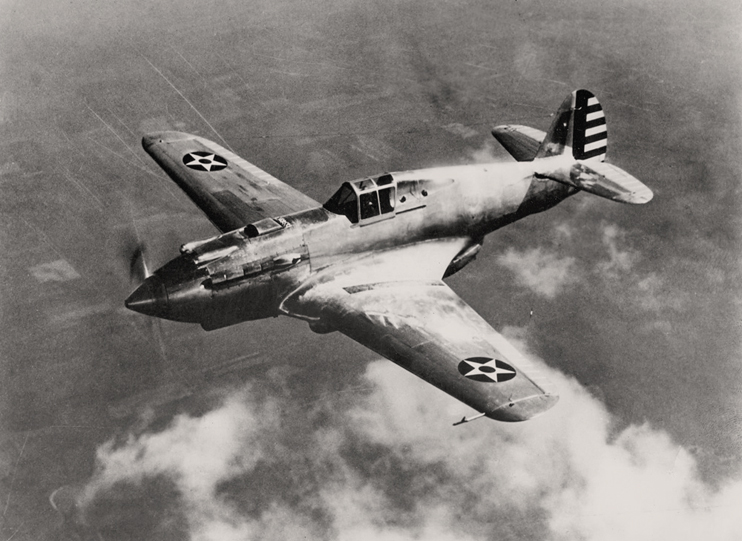
Project 914 Archives (S.Donacik collection) -
Larger Image

Project 914 Archives -
Larger Image
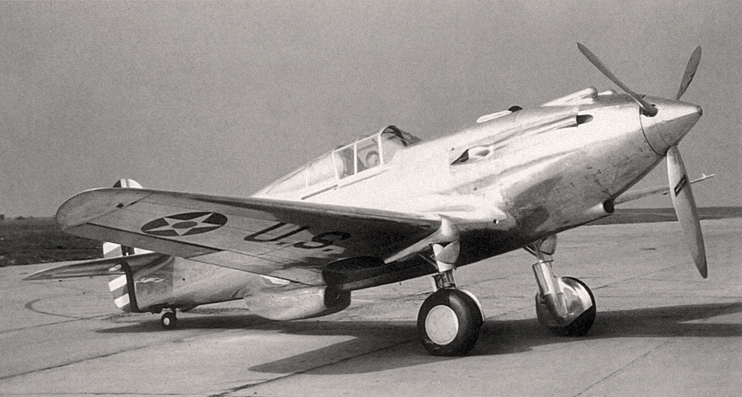
Project 914 Archives -
Larger Image
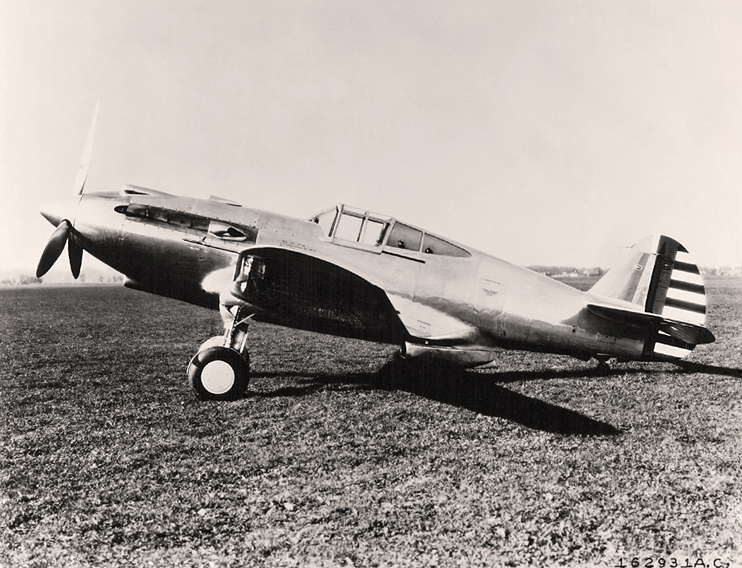
San Diego Air and Space Museum -
Larger Image
XP-40 - Modified

Project 914 Archives (S.Donacik collection) -
Larger Image

Project 914 Archives (S.Donacik collection) -
Larger Image
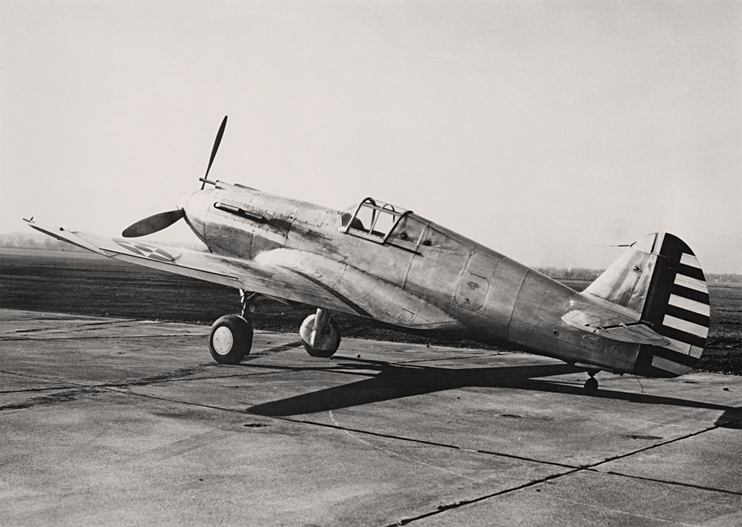
Project 914 Archives (S.Donacik collection) -
Larger Image
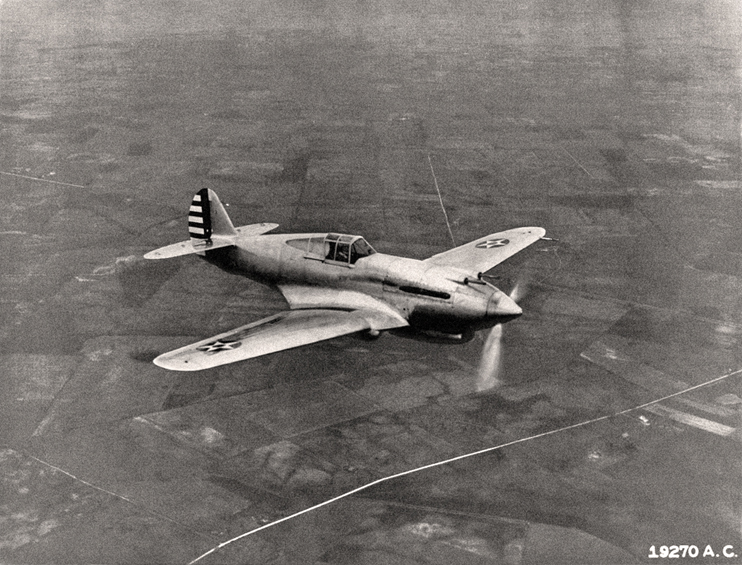
Project 914 Archives -
Larger Image
April, 1939; the XP-40 during drag-reduction tests in the NACA 30' x 60' wind tunnel at Langley.
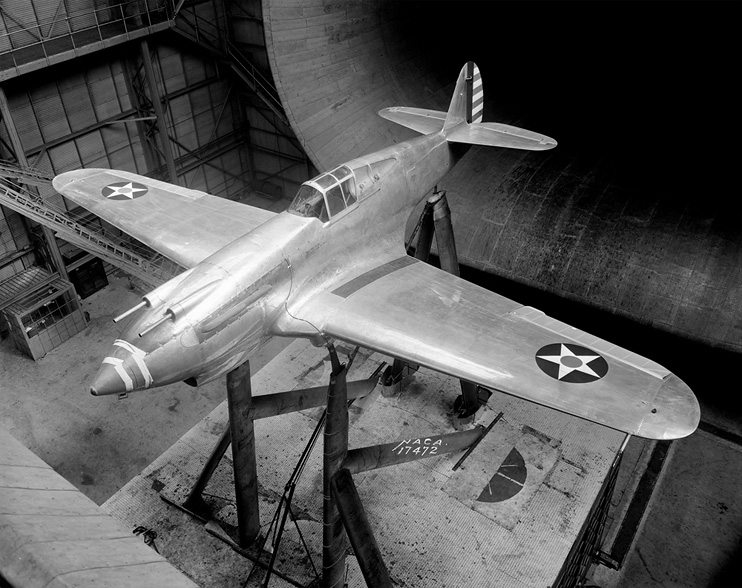
NASA, Langley Research Center -
Larger Image
XP-40 - Final Configuration
Looking perfectly sleek and refined, the XP-40 in her final form is distinguishable
from the initial production examples only in minor details... February 10th, 1940.
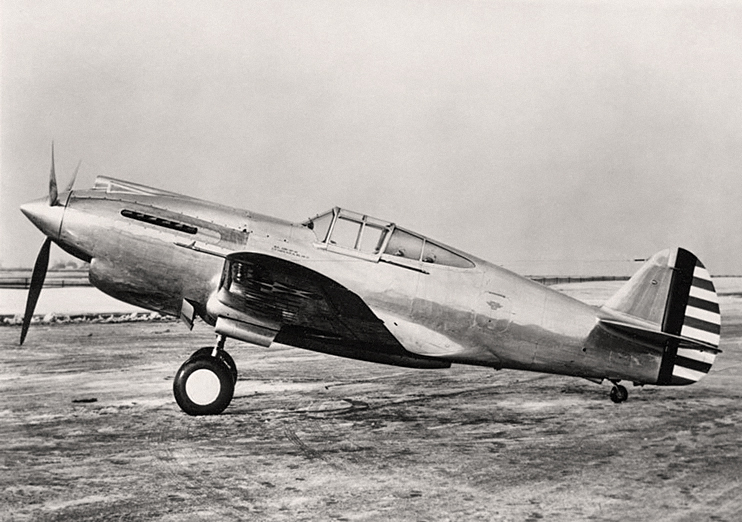
Project 914 Archives -
Larger Image
These next two photos were taken at Uplands Airport in Ottawa, Canada in May of 1940
during an evaluation of the XP-40 and a Britsh Supermarine Spitfire by the RCAF, RAF, and USAAC.
The XP-40 had by this time been assigned to the Air Corps Materiel Division at Wright Field.
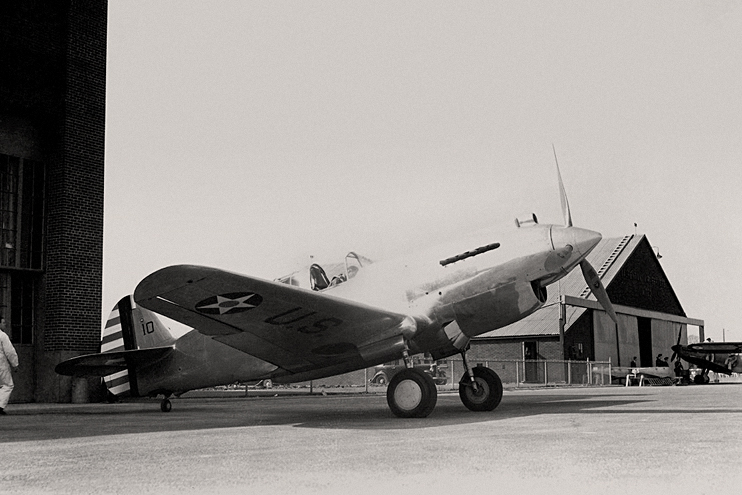
Project 914 Archives -
Larger Image
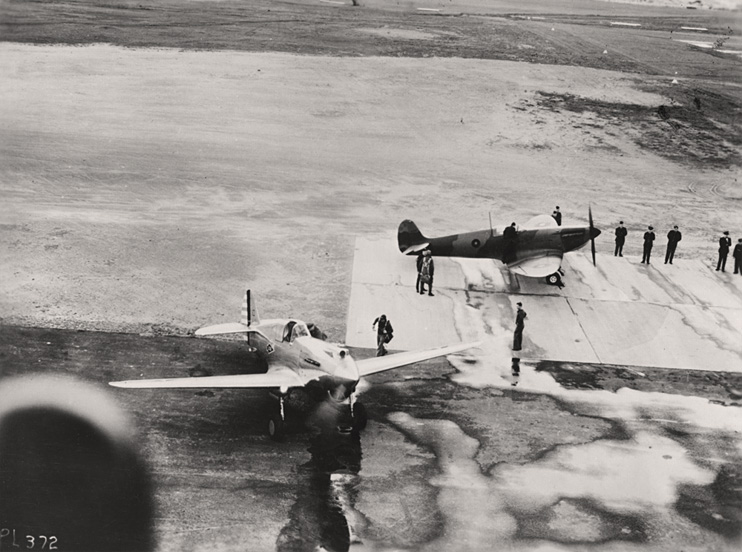
Project 914 Archives (S.Donacik collection) -
Larger Image
A closer look at the Hawk...
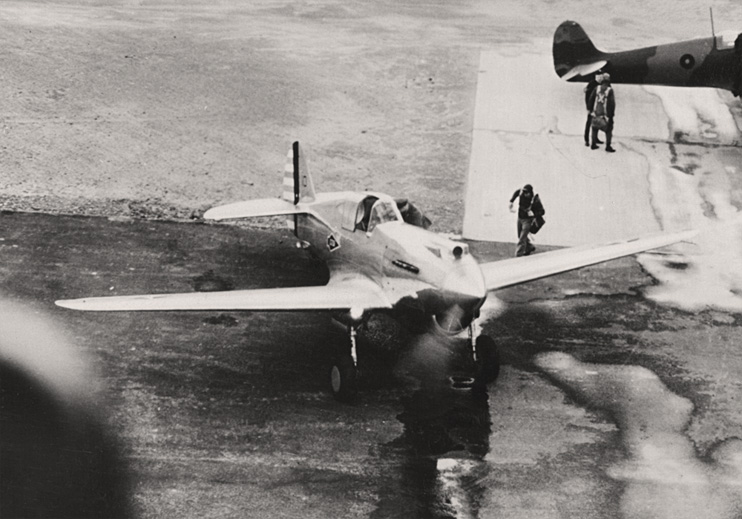
Project 914 Archives (S.Donacik collection) -
Larger Image
This mention of the evaluation in Ottawa appeared in an ish of the Air Corps Newsletter.
.jpg)
From: 'Air Corps Newsletter Vol. XXIV No.11' via Google Books
At Wright Field, after returning from the evaluation in Canada. The Air Corps designator
system was changed in May of 1940, and the XP-40's markings have been altered accordingly.
I'm not sure why the aircraft number was changed from '10' to '11', however.
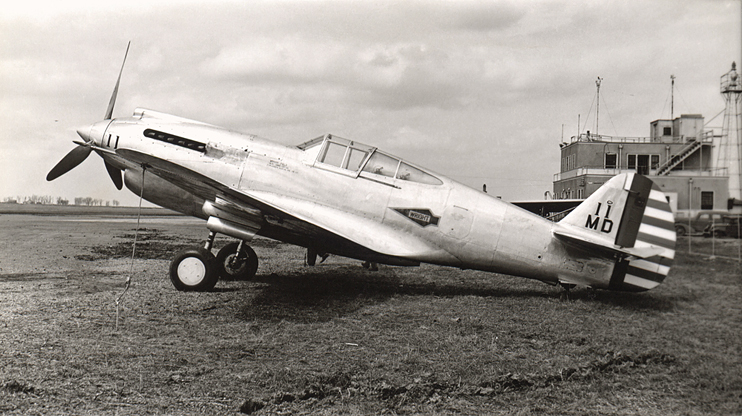
Project 914 Archives (S. Donacik collection) -
Larger Image
Testbed
In later years the XP-40 was used as a testbed at Wright Field for experimental rough-field landing gear
configurations. I have no date for this first image, but it was clearly taken on or after January 1st, 1944.
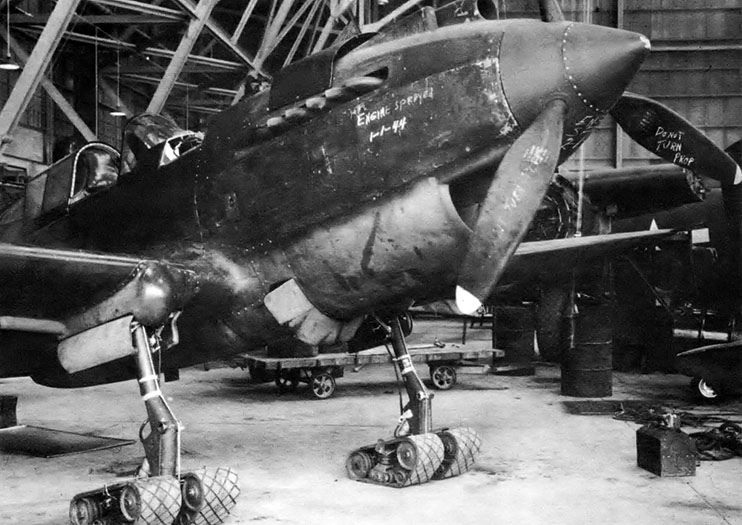
From: 'The P-40 Kittyhawk' by Ernest R. McDowell -
Larger Image
A closeup of the tracked gear setup...
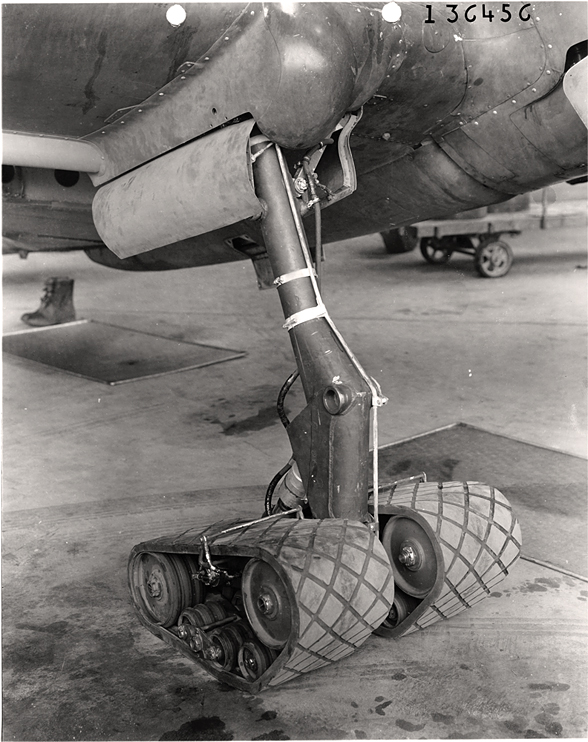
Air Force Materiel Command (afmc.af.mil) -
Larger Image
Here's an excerpt from an article on
THIS PAGE
of the Air Force Materiel Command website
which describes this experimental gear setup, testing, and results:
Concurrent with the testing of track gear on the A-20, Firestone was awarded a $15,900 contract
in June 1943 to design and test a track gear system for the Curtiss P-40 fighter aircraft suitable
for operations from sandy beaches. The P-40 track system was a dual system (two tracks per side) and
was expected to exert only half the ground pressure of conventional gear. The track gear was installed
on XP-40 No. 38-10 at Wright Field in September with the use of a conventional tail wheel. Testing began
in February 1944 but during taxi testing the system would get packed with snow and ice between the
belt and main drums, stretching the belt. In later flights the gear collected sod and mud.
Along with the testing of the track gear system, other P-40 aircraft were being used to test multi-wheel
and dual-wheel gear at Wright Field. All of these aircraft were scheduled for further testing by the
Proving Ground Command at Eglin Field, but during testing the XP-40 was damaged beyond repair and
was placed in storage at the AMC. The testing indicated that the track gear was inefficient for fighter
operations due to excessive internal friction on the track, inability of the track to get out of ditches
and over obstacles, smallness of the units and the inability of the unit to be sufficiently self-cleaning.
Although the P-40 project failed to produce a gear suitable for fighter operations, much valuable
knowledge had been gained. It was concluded (1) that light aircraft required long, narrow tracks, and
(2) that future tracks should be designed to conform to the ground pressures prevalent
in areas where the particular aircraft was to be operated.
A closer look at the track...
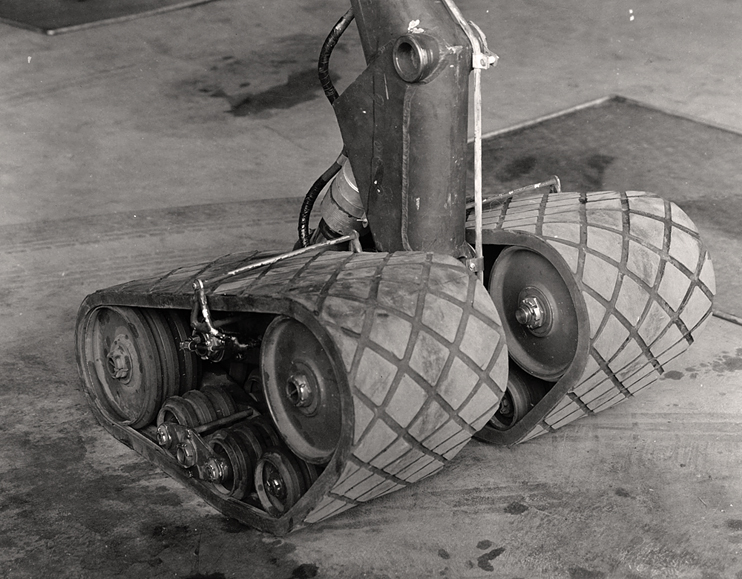
Air Force Materiel Command (afmc.af.mil) -
Larger Image
Here's a look at the XP-40 during testing of an earlier multi-wheel setup mentioned in the
excerpt above. These two images were taken from an Army Air Forces film dated August 19th, 1943.
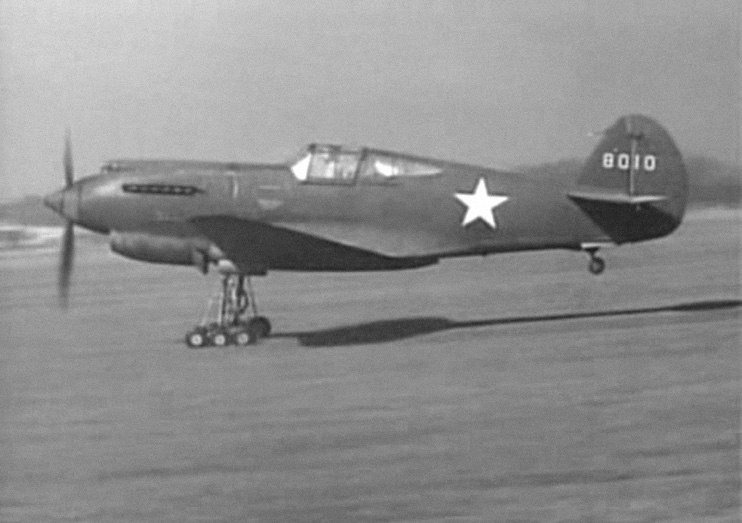
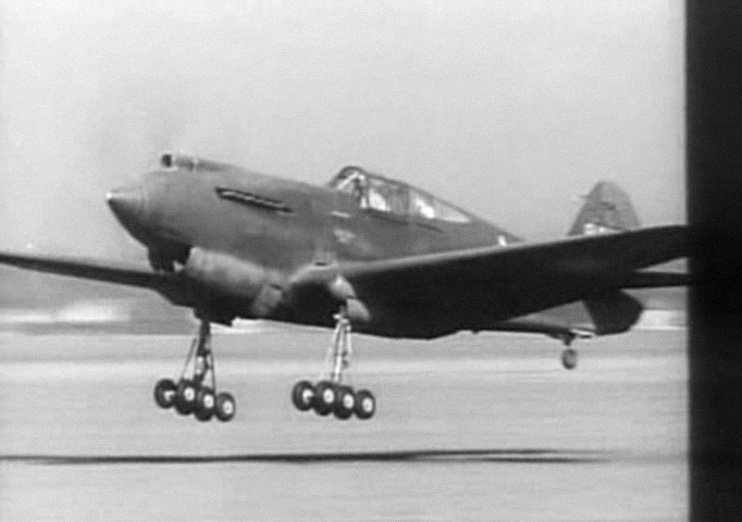
Back to 'P-40 Variants'









